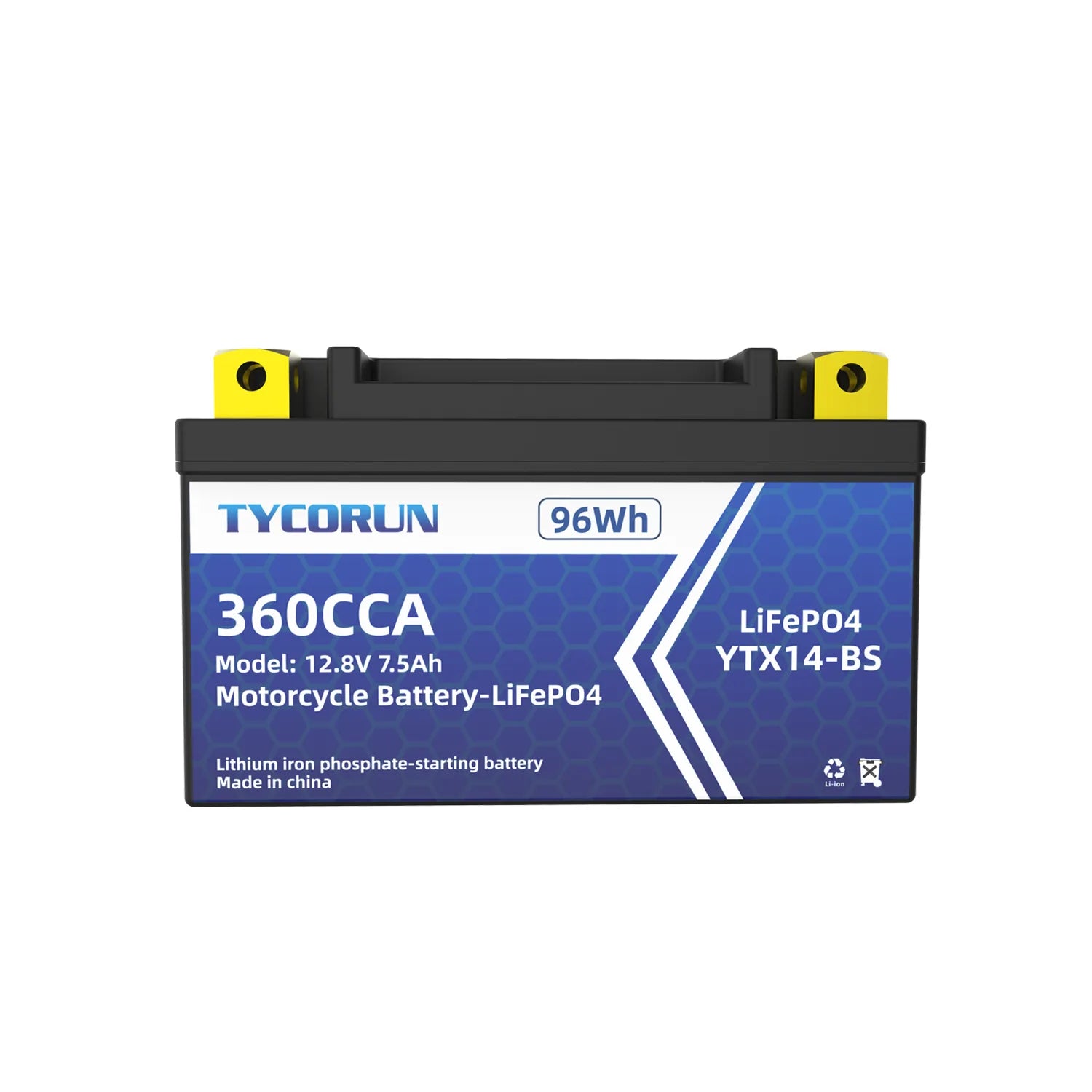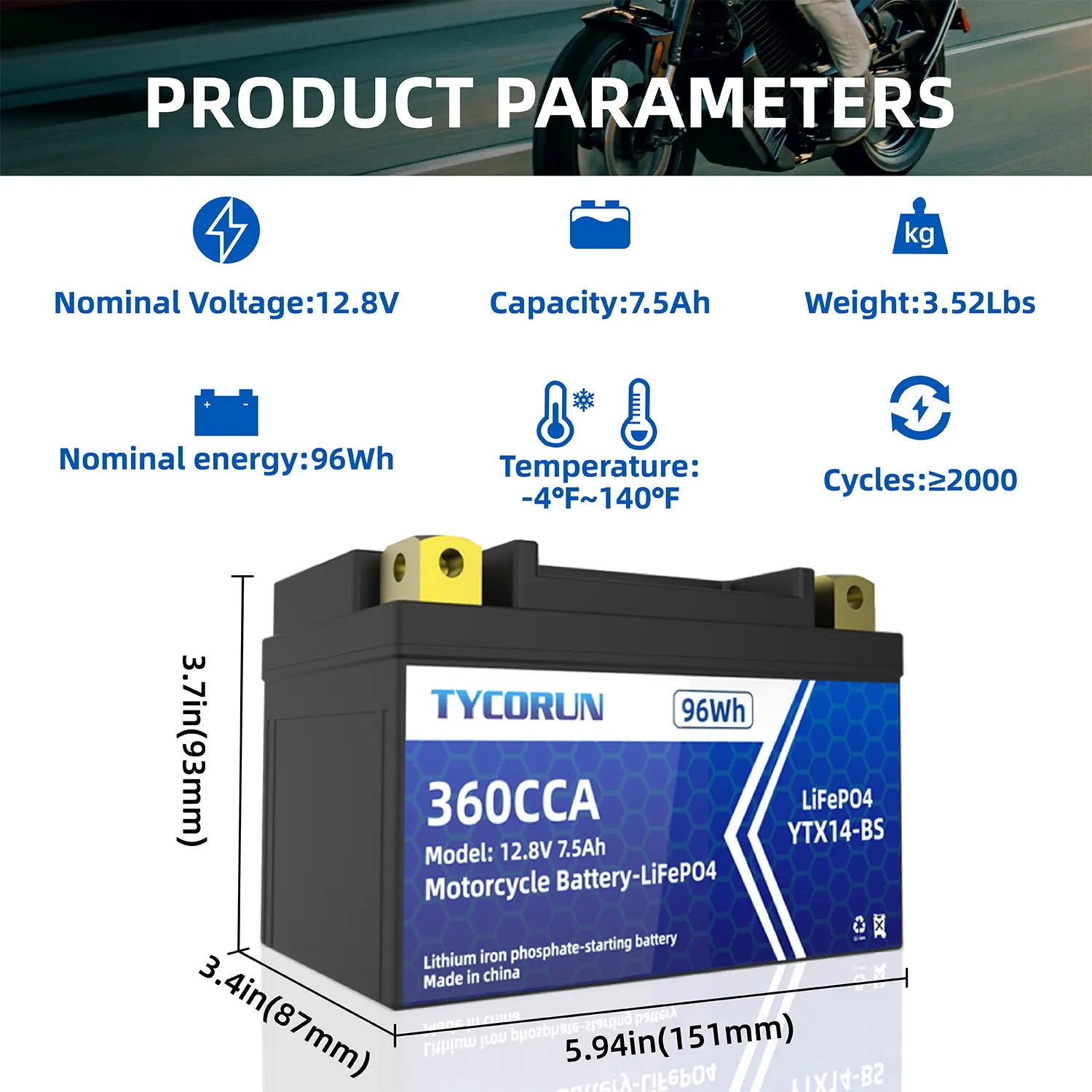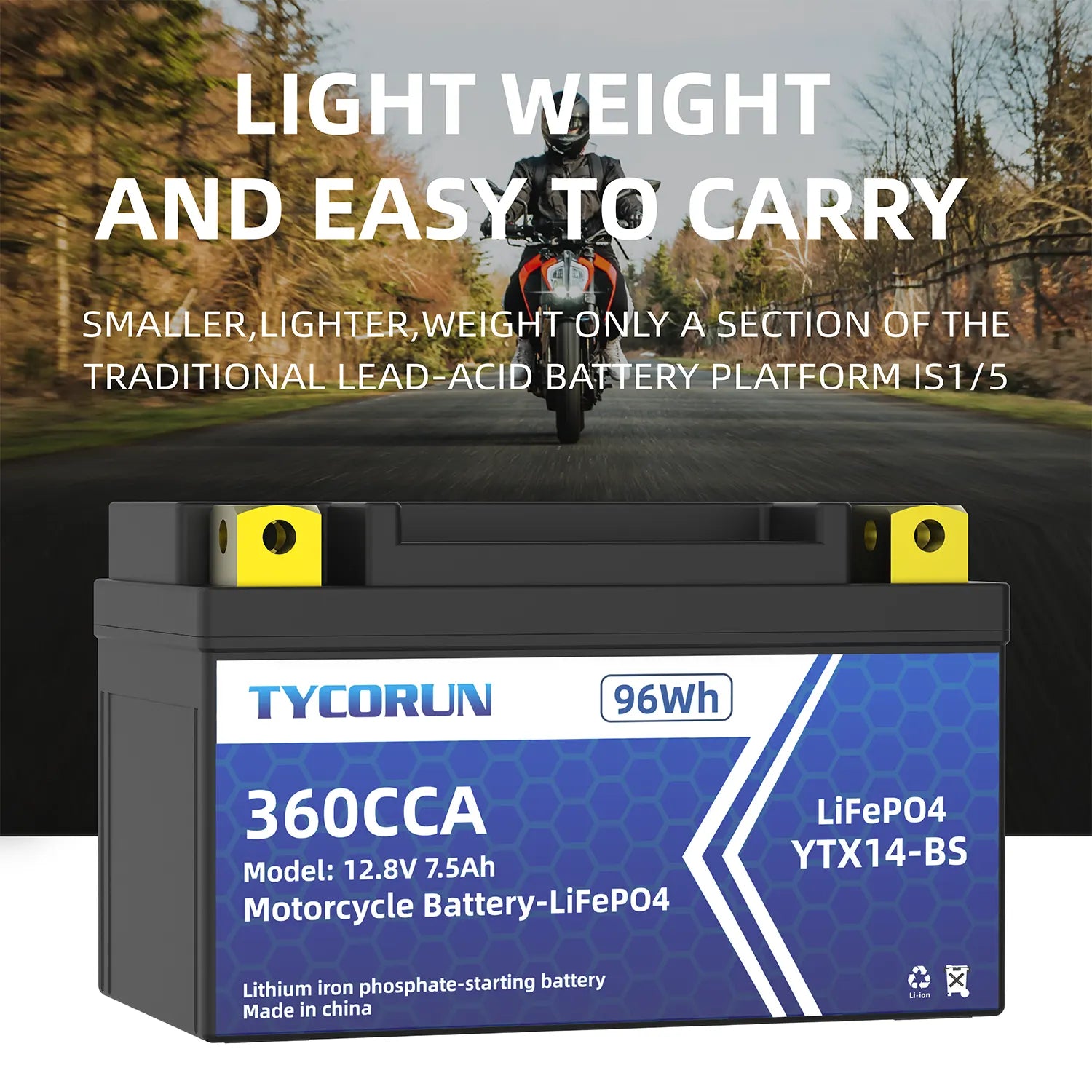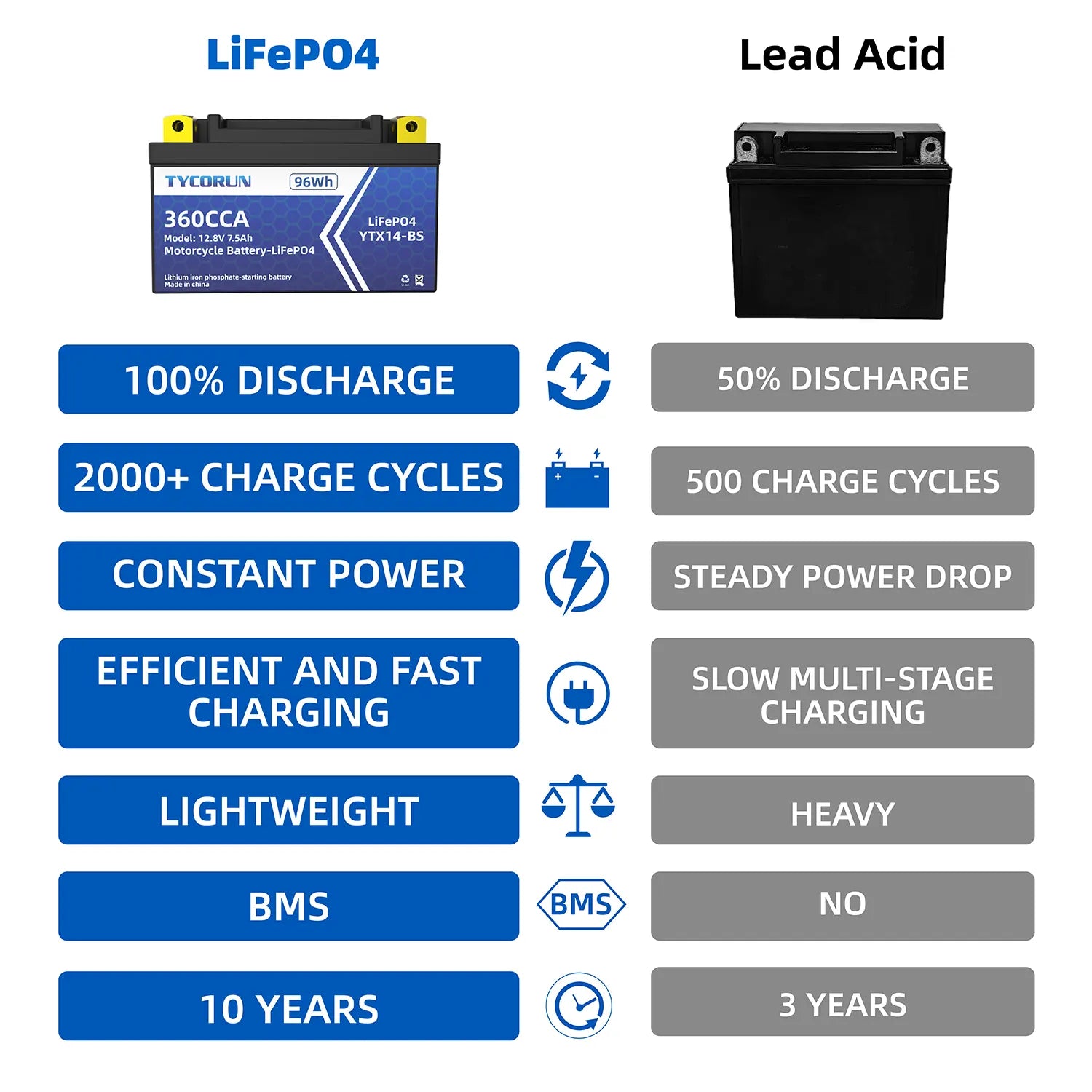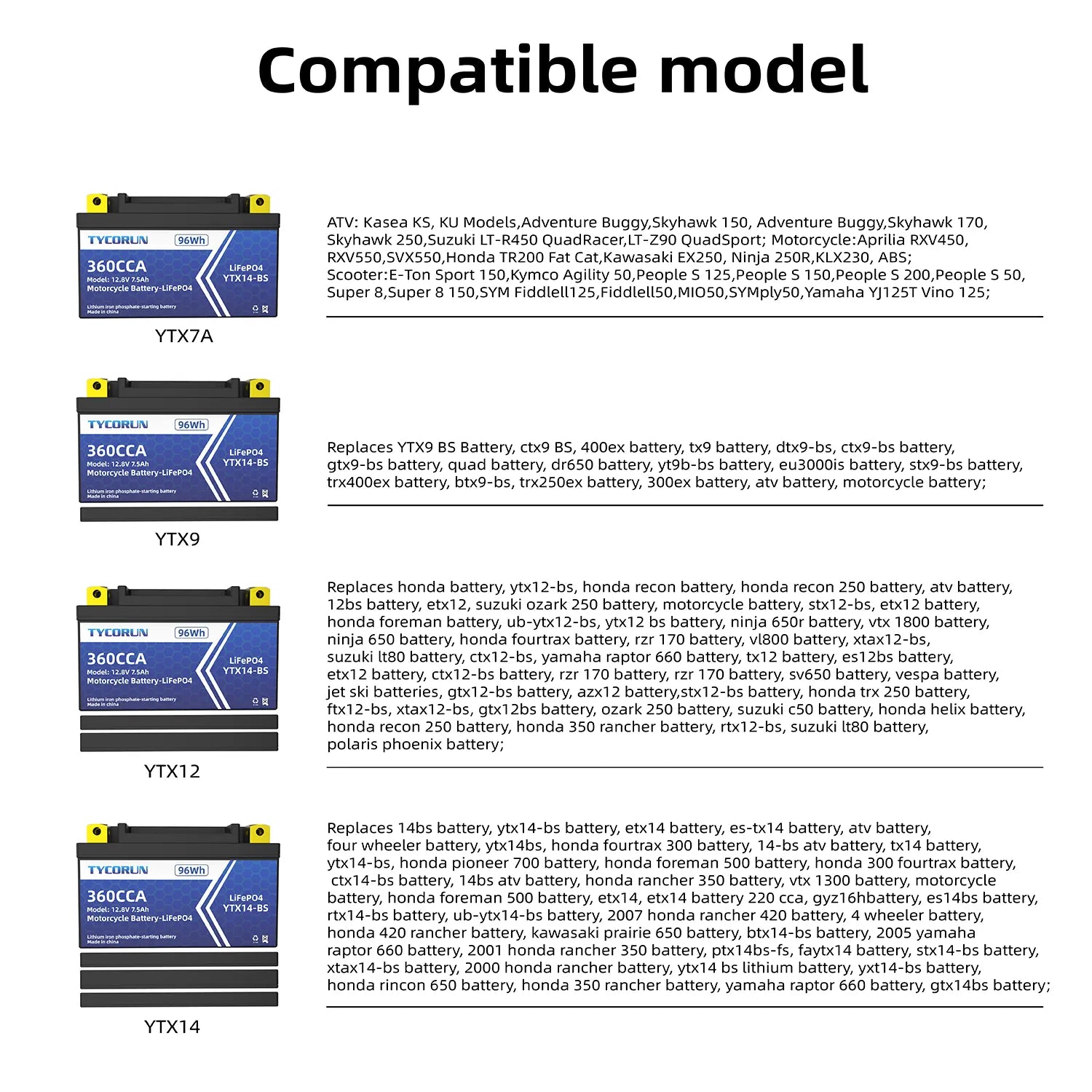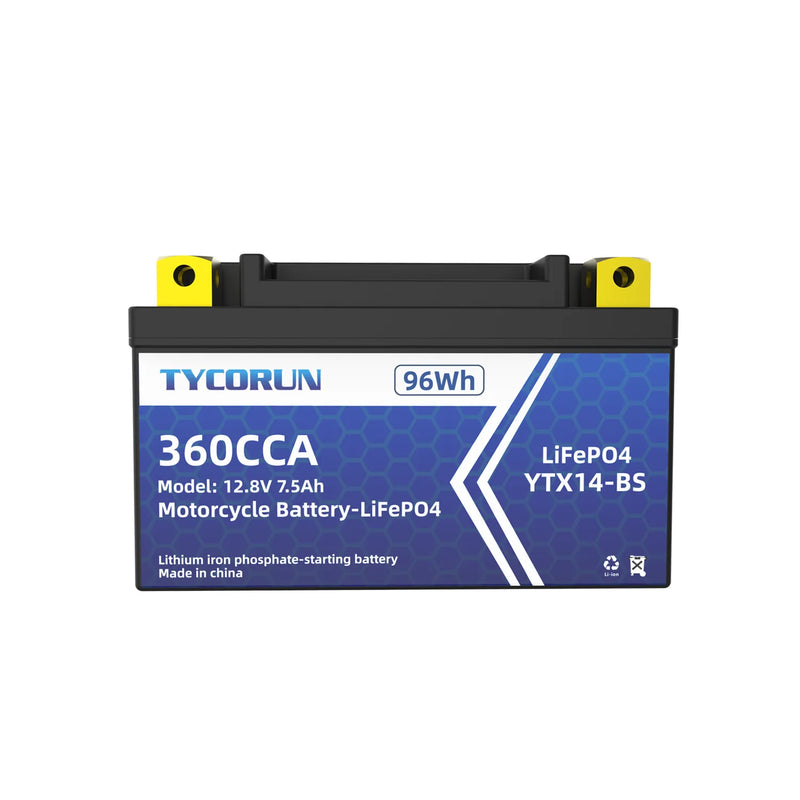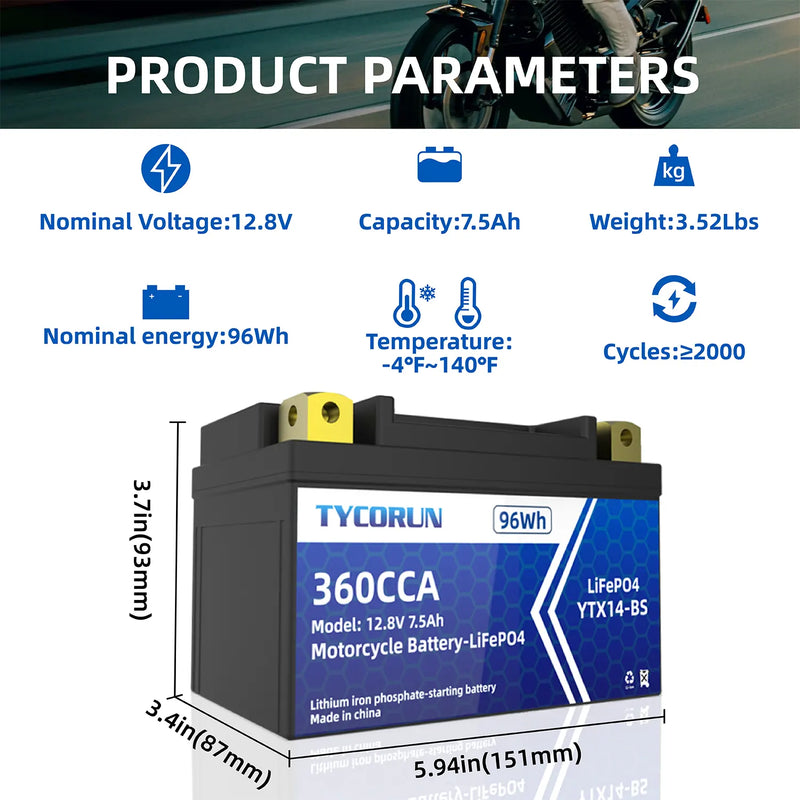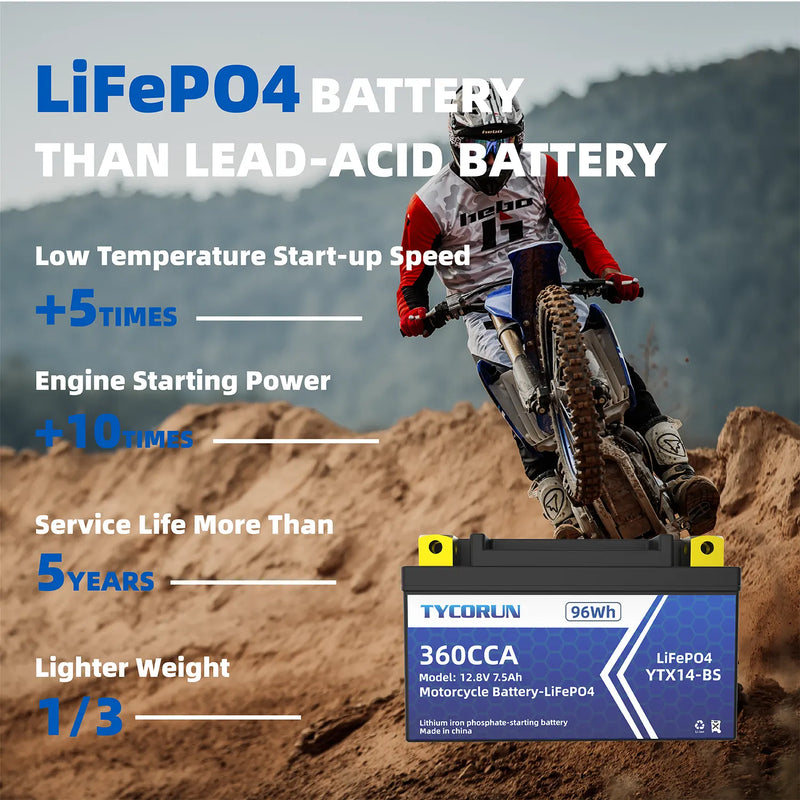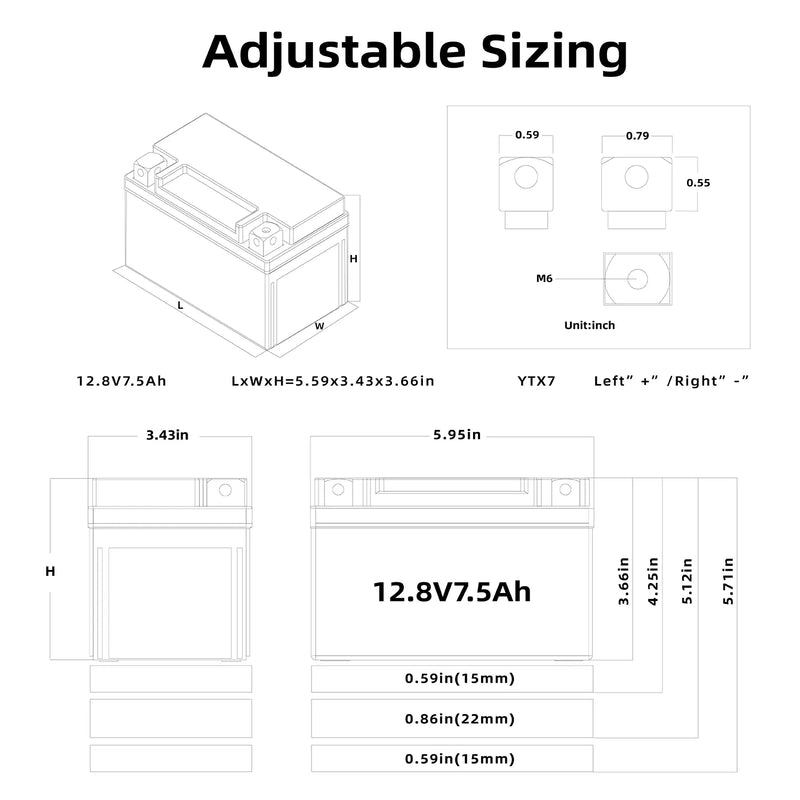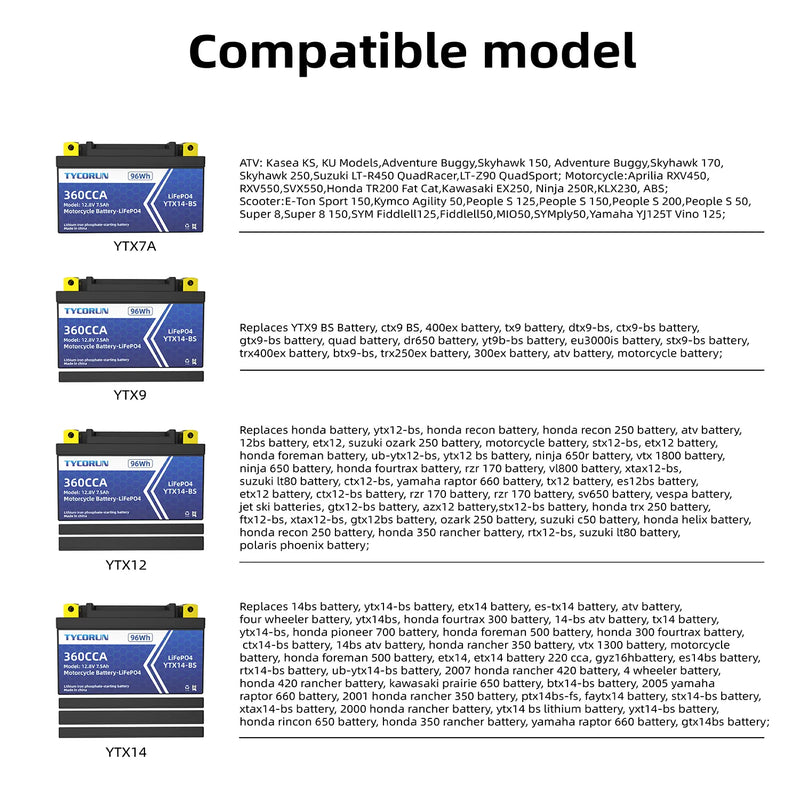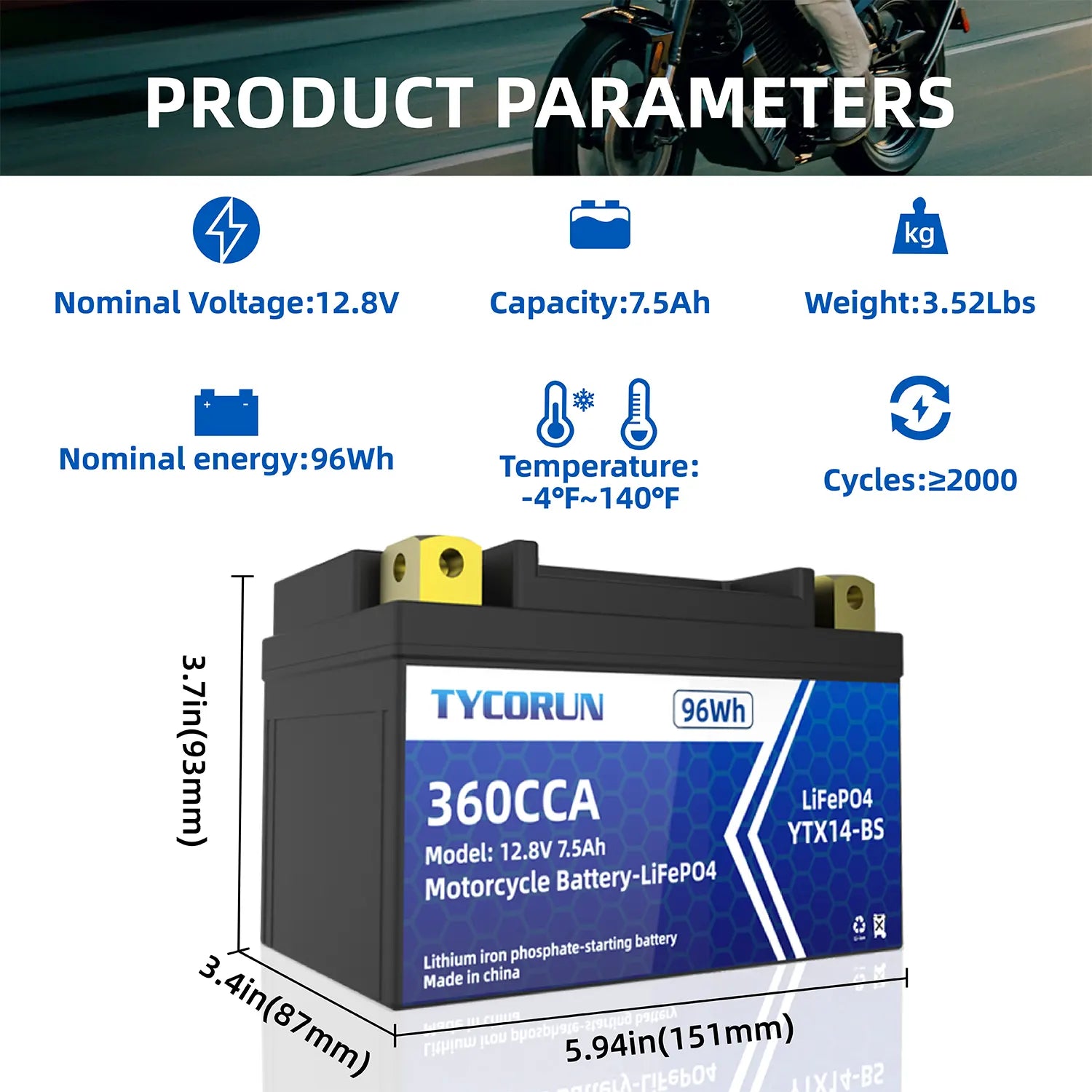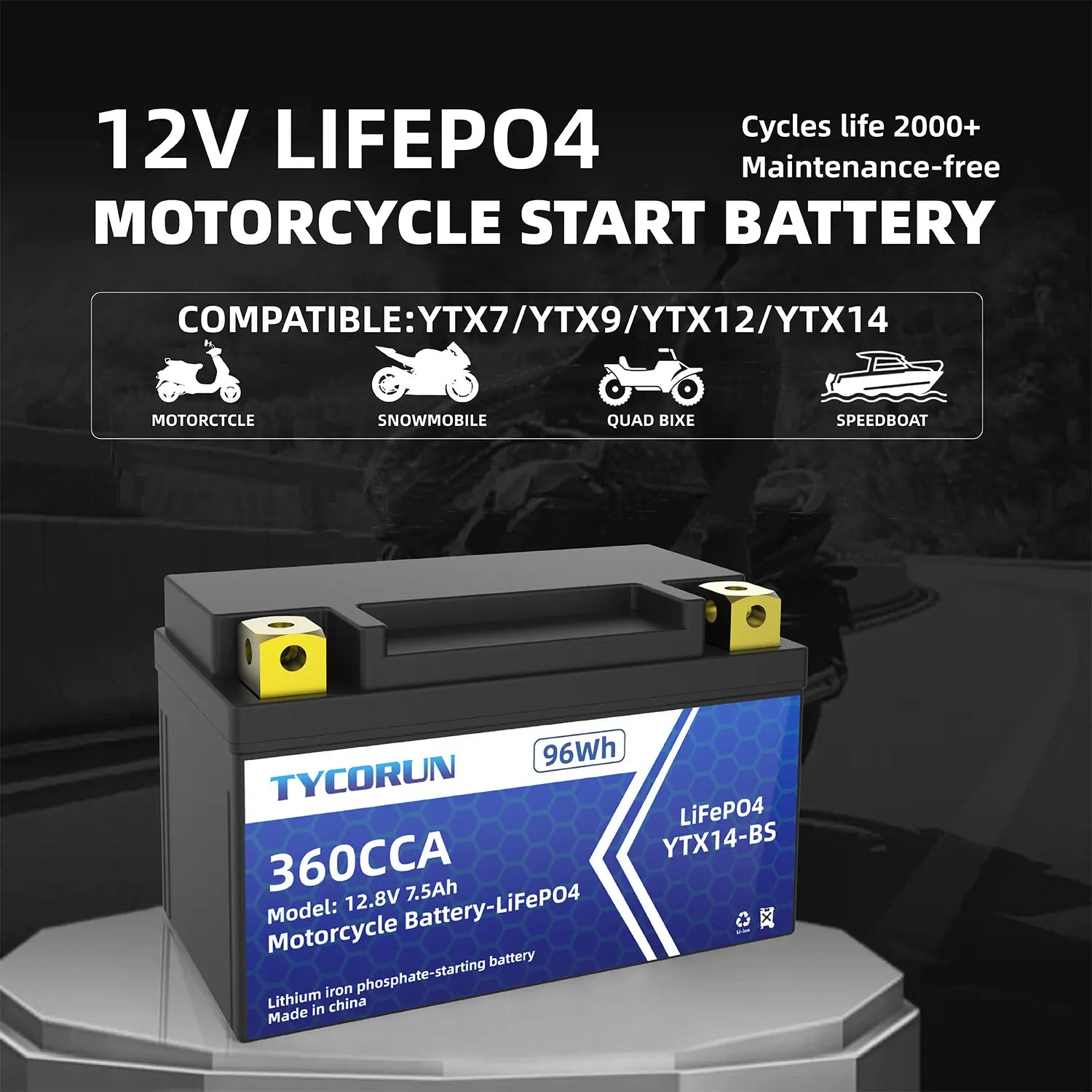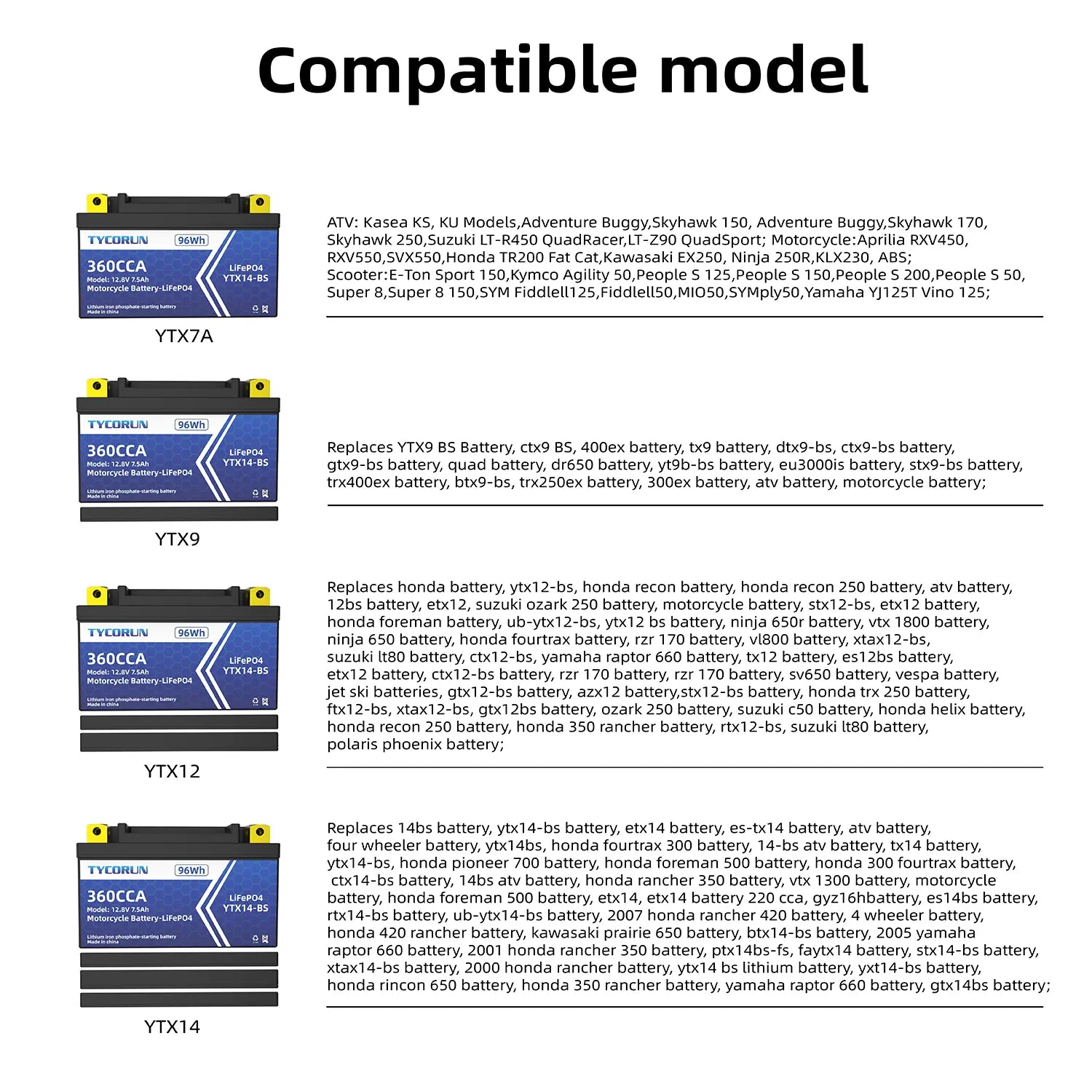
FREE SHIPPING
Free shipping on all US order or order above $100
SUPPORT 24/7
Contact us 24 hours a day, 7 days a week
30 DAYS RETURN
Simply return it within 30 days for an exchange.
100% PAYMENT SECURE
We ensure secure payment with PEV
Battery and Inverter FAQ
Our LiFePo4 batteries are considered to be safe, non-flammable and non-hazardous by international and federally regulated standards.
Our Batteries are commonly used for marine, RV and golf cart applications. You can use our lithium batteries for any application that would normally use a single or multiple lead acid, GEL or AGM batteries.
After you take out your old batteries, place our batteries in the same way. You can use the same cables to reconnect into the Lithium Battery.
Our lithium ion technology uses the latest and most advanced built-in battery protection system to prevent damage to the battery. You may utilize a standard charger for our products, although in some cases a lithium charger may be required to charge the batteries.
The industry standard house battery size used in most RVs, Campers, and #VanLife builds is the 12v 100Ah battery. This is a drop in replacement for AGM and most lead acid batteries. If you are charging off your engine's alternator we recommend a Victron DC-DC smart charger. If charging off solar panels we recommend a Victron Smart Solar charge controller, or if you have a solar charge controller choose the lithium setting. A handy size chart for number of batteries
12 Volt Lithium ion Motorcycle Battery 7.5Ah 360 CCA LiFePO4
Read more

When it comes to great engine starting power for motorcycles, 12V lithium motorcycle batteries are your best bet. The 12V Lithium ion motorcycle battery lasts about 5 times longer than traditional batteries while weighing only about 1.6kg.
Intrigued already? Read on if you want to learn more about the 12V lithium ion battery for motorcycles. We will explain what a 12V lithium motorcycle battery is, its advantages and applications, and how it compares to conventional lead acid batteries in this article.
Main content:
- What is a 12V lithium motorcycle battery?
- Advantages of 12V lithium motorcycle battery
- Are lithium motorcycle batteries better than lead acid motorcycle batteries?
- Applications of 12V lithium motorcycle battery
- How many CCAs do I need to start a motorcycle?
- Differences between motorcycle starting battery and car starter battery
- How do I know what size battery to get for my motorcycle?
- How to replace a lithium motorcycle battery?
- Maintenance tips for 12V lithium motorcycle battery
- FAQs
1. What is a 12V lithium motorcycle battery?
A 12 volt lithium ion motorcycle battery is a compact and lightweight battery specifically designed for motorcycles. Unlike traditional lead acid batteries, these batteries utilize lithium-ion technology, which offers a higher energy density and power output.
While there are different types of lithium batteries, such as lithium manganese oxide (LiMn2O4), lithium cobalt oxide (LiCoO2), and lithium nickel manganese cobalt oxide (LiNiMnCoO2), this 12V lithium motorcycle battery is a lithium iron phosphate (LiFePO4) battery, which is the most common type of lithium motorcycle battery.

2. Advantages of 12V lithium motorcycle battery
There are numerous advantages of the 12V lithium ion battery for motorcycle that make it the most preferred battery for motorcycles:
- Less weight: LFP battery has a high energy density so they can store more power in a small body, making them significantly lighter compared to lead acid batteries. For instance, a typical 12 volt lithium motorcycle battery weighs about 1.6 kg, while a lead acid battery of the same capacity weighs about 4.5 kg.
- Long lifespan: Lithium ion batteries typically have a longer lifespan than lead-acid batteries. With proper maintenance, your lithium motorcycle battery can last up to five times longer without significantly losing its capacity and even when you keep them in storage for extended periods, they can still retain their charge.
- High cranking power: A 12V lithium ion battery for motorcycle has a high cranking current which means that it can start your motorcycle faster and easier, even in extreme cold weather.
- Eco-friendly: Lithium batteries do not contain toxic materials like lead and sulfuric acid which are present in lead acid batteries.
3. Are lithium motorcycle batteries better than lead acid motorcycle batteries?
Yes, lithium batteries for motorcycles are better than lead-acid motorcycle batteries in almost every aspect. As we stated earlier, lithium batteries are lighter and more powerful than lead-acid batteries.
And unlike lead acid batteries which require frequent maintenance from time to time, lithium batteries are maintenance-free, which means you can save the time and cost of maintenance. The only drawback is that they are more expensive but you’ll get your money’s worth from their superior performance.

4. Applications of 12V lithium motorcycle battery
The 12V lithium ion batteries are not limited to motorcycles alone. These batteries can be used for any vehicle that requires a 12V battery, such as snowmobiles, jet skis, and UTVs (utility terrain vehicles), or as power wheels battery.
5. How many CCAs do I need to start a motorcycle?
CCA stands for Cold Cranking Amps, which is a measure of how much current a battery can deliver at extremely cold temperatures of 0°C for 30 seconds. Basically, the higher the CCA of your battery, the easier it can start your motorcycle in cold weather.
The CCA requirement for a motorcycle depends on the engine size and compression ratio. Small displacement motorcycles usually require around 150-250 CCA. Mid-range motorcycles need between 300-400 CCA while the larger, high-performance bikes require over 500 CCA. You can find the exact CCA requirement of your motorcycle in the owner’s manual.

6. Differences between motorcycle starting battery and car starter battery
While both motorcycle starting batteries and car starter batteries serve the same purpose of starting an engine, there are a few key differences:
- In terms of size, motorcycle starting batteries are smaller and lighter due to the space constraints of motorcycles, and the power requirement of motorcycles itself is smaller than cars. Car batteries, on the other hand, are designed to be larger to fit the spacious engine compartment and satisfy the large starting power requirements.
- Motorcycle battery voltage output is same with car battery voltage output, typically 12V, but their capacity is different. Generally, a car starter battery capacity ranges from 32ah to 80ah, and a motorcycle starting battery capacitor ranges from 5ah to 9ah.
- Car starter batteries have a higher CCA rating than motorcycle batteries as cars generally require more power to start their large engines in cold weather.
- Motorcycle batteries are generally more affordable due to their smaller size and lower power capacity, unlike car batteries which tend to be more expensive.
7. How do I know what size battery to get for my motorcycle?
If you’re in the market for a new battery for your motorcycle, the first thing is to know what size battery you should get.
You can find detailed information about the recommended battery size and specifications for your motorcycle in the owner’s manual. It will also include details about the required battery voltage and CCA. Alternatively, if you already have a battery installed on your motorcycle, you can find the size, voltage, and CCA information printed on the battery itself.
Another option is to measure the dimensions of your current battery. Just take the battery out from your motorcycle and take note of its length, width, and height, and then you can search for a replacement battery with these exact dimensions.
Take note that while it's crucial to get a battery that fits snugly in your motorcycle, it's equally important to match the voltage and CCA specifications to avoid underperformance of your motorcycle.

8. How to replace a lithium motorcycle battery?
Replacing a lithium motorcycle battery is a relatively straightforward process. The first and most important step is to get a replacement battery that’s the same size and voltage of the old battery. Here's a step-by-step guide to help you through the replacement process:
- Step 1: Turn off your motorcycle and remove the key from the ignition.
- Step 2: Locate the battery compartment, which is usually checked under the seat or behind the side panels of your motorcycle and remove the seat cover or the panel to access the battery.
- Step 3: Disconnect the negative (-) terminal of the battery first, followed by the positive (+) terminal.
- Step 4: Remove the old battery and take note of its orientation for proper battery hookup of the new battery.
- Step 5: Place the new battery in the same orientation as the old one and connect the positive (+) terminal first, followed by the negative (-) terminal. Secure the connection but be careful not to over-tighten it.
- Step 6: Finally, close the cover of the battery compartment, turn on your motorcycle, and check if the battery is working properly. If you encounter any problems, check and secure the battery connections again. If you’re unable to fix the problem on your own, contact a mechanic for assistance.
8. Maintenance tips for 12V lithium motorcycle battery
Like every other battery, the lifespan of the 12 volt lithium ion motorcycle battery depends on how well it is maintained. To ensure the optimal performance of your motorcycle battery, here are some tips for you to follow:
- Charge it regularly, say once every three months if you plan on storing your battery for an extended period.
- Charge your 12V lithium motorcycle battery only with chargers designed for lithium batteries.
- Keep your motorcycle batteries away from water to prevent short circuits and rust.
- Store the batteries at appropriate temperatures and away from direct sunlight or extreme temperatures. The recommended storage temperature is within 15-25°.
- While your 12V motorcycle batteries do not need to be fully charged at all times, it’s important not to leave it totally empty when you plan to storage it for long time.

10. FAQs
① Do you need a special charger for lithium motorcycle battery?
Yes, you need a charger specifically designed for lithium-ion technology to charge your 12V lithium motorcycle battery. While a regular charger may charge your lithium motorcycle battery for a while, it can damage the battery and shorten its lifespan. A lithium charger provides a CCCV charging mode that can charge your battery safely.
② Why are 12V lithium motorcycle batteries so expensive?
12V lithium motorcycle batteries are more expensive than other battery types because they use the more advanced lithium-ion technology.
You know that lithium batteries have higher energy density, and a longer lifespan than other battery technologies like the battery management system(BMS), which monitors the battery status in real time. And all these advantages come with a higher price tag. But these batteries are definitely worth the price as they offer exceptional power and performance like no other.
③ What is the lifespan of a 12V lithium motorcycle battery?
A 12 volt lithium ion motorcycle battery can last up to 10 years, depending on how you use and care for your battery but you can extend its lifespan by following the maintenance tips that we have provided above.
Related posts: 12 volt 100ah lithium battery, 12 volt 200ah lithium battery, lithium RV battery
You may also like
- Choosing a selection results in a full page refresh.


